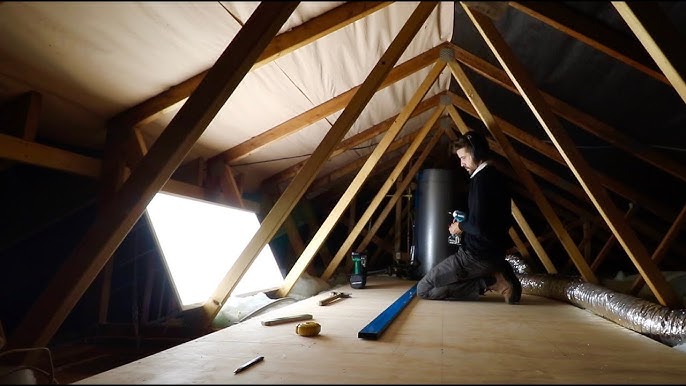Preparing for emergencies in your home is crucial, especially when it comes to areas that are often overlooked, such as the attic. In this guide, we will explore comprehensive attic emergency preparedness tips that are essential for both homeowners and real estate developers. It’s important to ensure that your attic is ready to withstand any unforeseen situations, and these tips will help you achieve just that.

Why Attic Preparedness Matters
The attic is a vital part of your home, often used for storage, but it’s also a space that can be vulnerable during emergencies. Ensuring that your attic is well-prepared can prevent potential hazards and provide peace of mind.
Identifying Potential Attic Hazards
Before diving into preparedness strategies, it’s important to identify potential risks. Common issues include structural weaknesses, poor insulation, and the presence of pests.
Strengthening Attic Structure
A strong attic structure can withstand heavy loads and harsh weather conditions. Regular inspections and maintenance, such as those outlined in our Truss Repair Guide, are key to ensuring structural integrity.
Essential Supplies for Attic Emergencies
Having the right supplies in your attic can make a significant difference during emergencies. Here’s a list of essentials:
- Flashlights and extra batteries
- Non-perishable food and bottled water
- First-aid kit
- Fire extinguisher
- Basic tools and repair materials
The Importance of Proper Insulation
Proper insulation not only aids in energy efficiency but also plays a crucial role in emergency situations. For more information on insulation, refer to our Insulation Guide.
Organizing Your Attic
An organized attic is easier to navigate during emergencies. Consider implementing a DIY organization system to ensure that essentials are easily accessible. Check out our DIY Organization Tips.
Maintaining a Safe Attic Environment
Regular cleaning and maintenance are vital for a safe attic environment. Dust, mold, and pests can pose significant risks, so be sure to keep your attic clean and well-ventilated. Our Roof Cleaning Tips offer valuable insights.
Repairing Attic Damages
Address any damages promptly to prevent them from escalating. Whether it’s repairing floorboards or ceiling cracks, timely repairs are crucial. Our Floorboard Repair Tips can guide you through the process.
Creating an Emergency Plan
Having an emergency plan in place is vital. Ensure that all family members know the plan and practice it regularly. This includes knowing how to safely evacuate the attic and what supplies to grab in an emergency.
Communicating with Family Members
Clear communication with family members is crucial during emergencies. Make sure everyone knows their roles and responsibilities, and establish a communication plan in case of separation.
Regularly Reviewing Your Preparedness Plan
It’s important to regularly review and update your emergency preparedness plan. As your household changes, your plan may need adjustments. Stay informed about new safety guidelines and incorporate them into your plan.
Leveraging Technology for Attic Safety
Modern technology can enhance your attic’s safety. Consider installing smoke detectors, carbon monoxide detectors, and security cameras to monitor and alert you to potential hazards.
The Role of Professional Help
Sometimes, enlisting professional help is necessary to ensure your attic is safe and well-prepared. Professional inspections can identify issues you might overlook and provide expert solutions.
Staying Informed About Attic Innovations
Stay updated with the latest attic innovations and remodeling ideas through resources like Lowes’ Attic Ideas. These resources can offer inspiration and practical solutions for improving your attic space.
Conclusion
Preparing your attic for emergencies is a proactive step that can safeguard your home and loved ones. By following these attic emergency preparedness tips, you can ensure that your attic is ready to handle any situation. Remember, regular maintenance, organization, and communication are key to effective preparedness.

FAQ
What are the most common attic hazards?
Common attic hazards include structural weaknesses, poor insulation, and pest infestations. Regular inspections can help identify and mitigate these risks.
How often should I review my emergency preparedness plan?
It’s recommended to review your emergency preparedness plan at least once a year or whenever there are significant changes in your household.
What role does insulation play in attic safety?
Insulation is crucial for energy efficiency and safety. Proper insulation can prevent heat loss and protect your attic from extreme weather conditions.
This article contains affiliate links. We may earn a commission at no extra cost to you.



